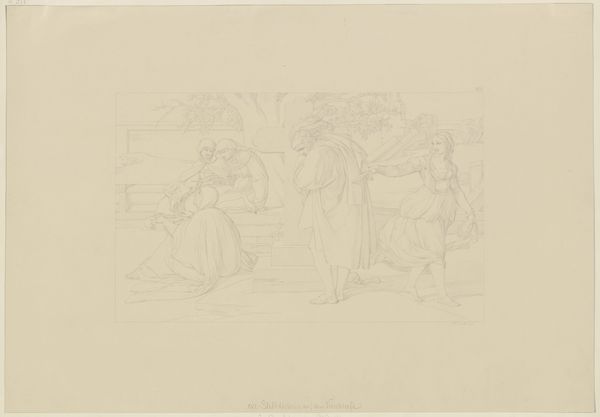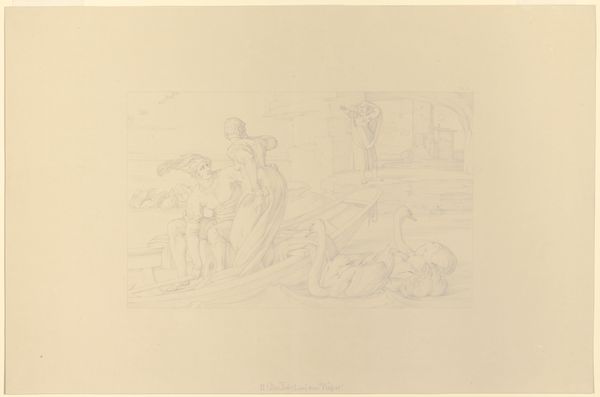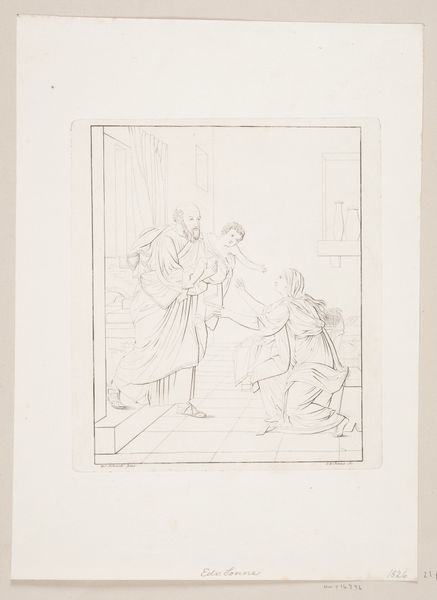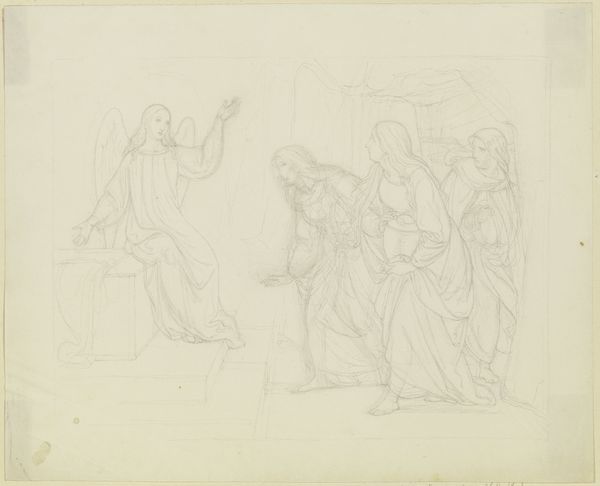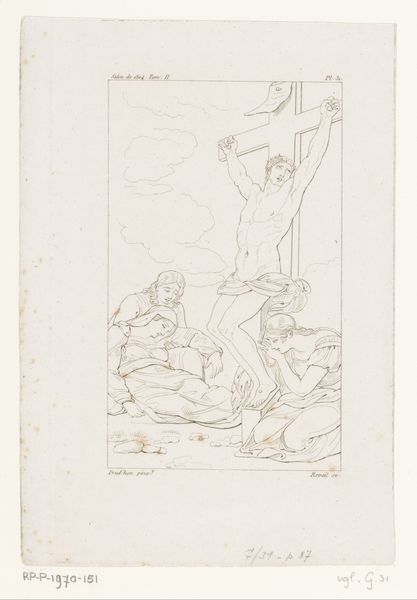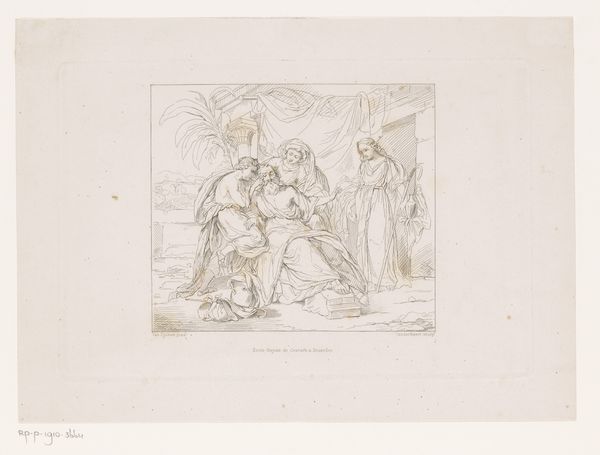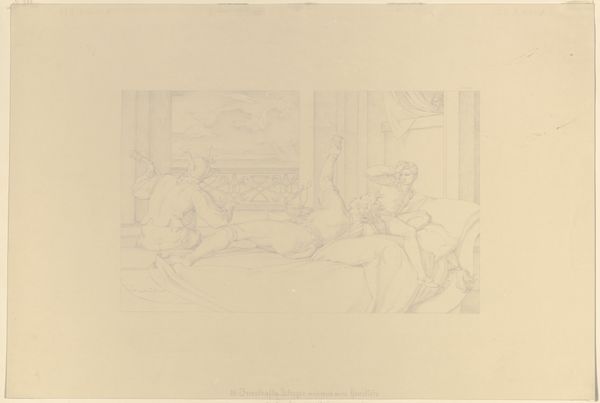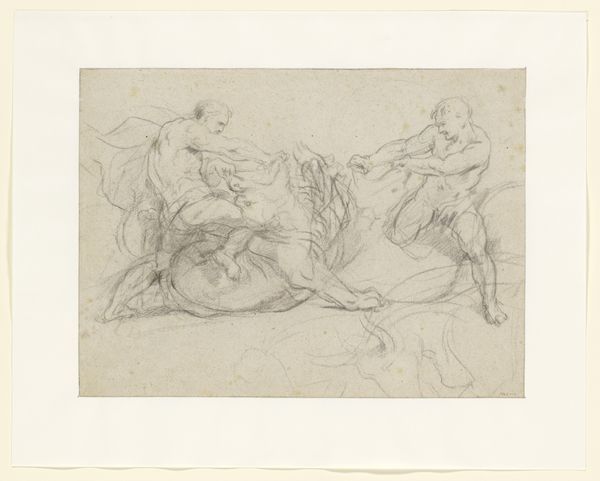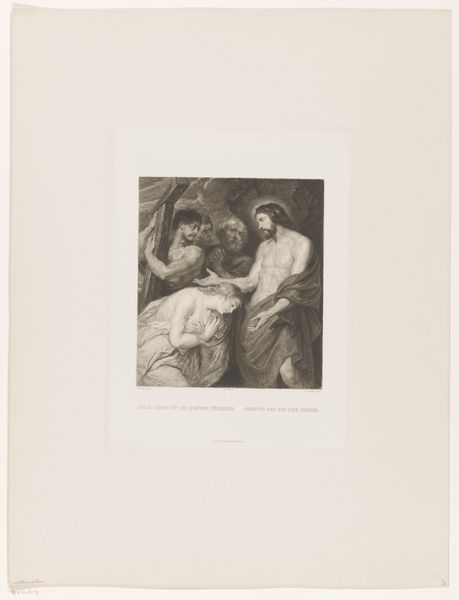
_Aus dem Leben eines Wüstlings__ VII. Der Wüstling bei einer Hexe 1845
0:00
0:00
drawing, pencil
#
drawing
#
pencil sketch
#
etching
#
figuration
#
german
#
romanticism
#
pencil
#
history-painting
Copyright: Public Domain
Curator: It is certainly evocative, wouldn't you agree? The light pencil work lends an air of fragility. Editor: Yes, that delicacy is immediately striking. I’m reminded of classical friezes, yet it feels incomplete somehow. Curator: That incompleteness is quite telling, actually. This is "_Aus dem Leben eines Wüstlings__ VII. Der Wüstling bei einer Hexe," or, loosely translated, "From the Life of a Wastrel, VII. The Wastrel with a Witch," by Bonaventura Genelli, made in 1845. The medium here is particularly important – pencil on paper – as it speaks to the accessibility and the preparatory nature of the piece. Editor: So, it's more of a study. I see. That context shifts my understanding of its social purpose. How was a piece like this displayed or circulated at the time? Was this something for private enjoyment, or was Genelli thinking of a wider audience? Curator: It would have likely circulated among a close circle of artists and patrons, rather than exhibited publicly. The Romantic movement had a keen interest in folklore and mythology, and there was a rise in privately commissioned work with similar subjects. Genelli probably aimed to have it reproduced as an etching, given his skill in that printmaking process. Editor: Knowing it's a preparatory work changes things. The rawness of the materials makes it honest, even rebellious against the highly polished academic styles popular then. And knowing he wanted it reproduced hints at an understanding of printmaking’s ability to disseminate images beyond elite circles. Curator: Precisely. Now, think about the imagery – a witch, a dissolute figure, mythological overtones...What's the intended commentary on social mores of the time? Editor: This portrayal feels rather sympathetic. The "wastrel" is passive, even vulnerable, not overtly condemned. It reflects how German Romanticism sought new moral compass points within art and imagination rather than societal restrictions. Curator: Absolutely. He subverts conventional morality by presenting these marginalized figures with nuance. Editor: It really does force one to consider where and how narratives surrounding deviancy, freedom, and authority were forming at this moment in German culture. Thank you, this peek behind the production curtain brought forward many interesting reflections! Curator: My pleasure! The pencil line holds surprising power to question societal assumptions even now, doesn’t it?
Comments
No comments
Be the first to comment and join the conversation on the ultimate creative platform.
